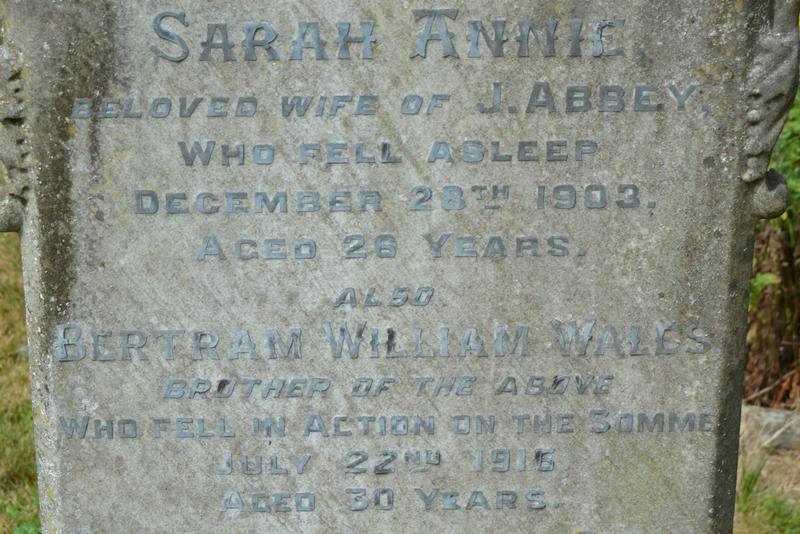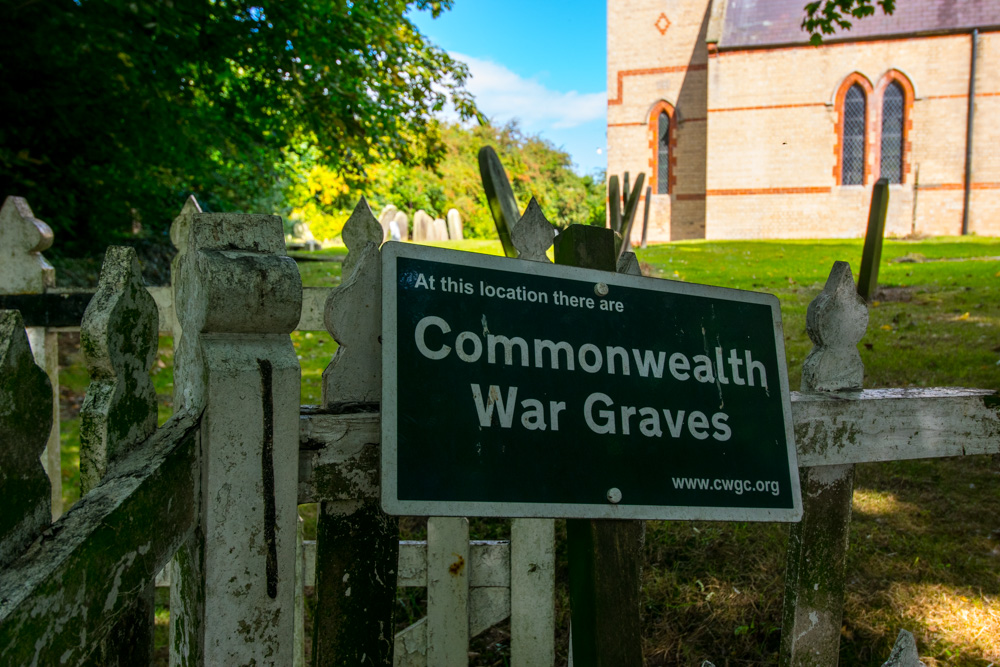Two men are on Holmpton’s Roll of Honour from the First World War. These are their stories.
At the start of the hostilities in 1914, Bertram William Wales volunteered and joined the 1st Birmingham Pals Battalion set up by the Lord Mayor of Birmingham – the idea being that friends and neighbours would serve together. We don’t know exactly when he joined up but the Battalion was set up at the beginning of the war and soldiers were given their regimental numbers in order. He was number 1025, which makes him one of the first to sign up. He was then 28 years old. The Battalion was later renamed the 14thBattalion of the Warwickshire Regiment.
Bertram was later promoted to Lance Corporal, and served in D company. After training he went with his Battalion to France on 21 November 1915.He died there at the battle of the Somme on the night of the 22/23 July 1916. The memorial stone at Holmpton says he died on the 22nd, but Army records say he died of his wounds on the day after. As he died in a night action which started at 10pm, either is possible. He has no known grave, so it is likely his body was not recovered from no-man’s land. He is remembered on the Memorial to the Missing of the Somme near the village of Thiepval in Picardy, France.
The record written the next day by the Battalion Commander has survived both as a summary and a full appendix in the Battalion’s War Diary. The Battalion had 480 casualties, either killed, wounded or missing (believed killed) in that attack. The theoretical maximum strength of a British Infantry Battalion at this time was 1,007, but in practice because of losses, sickness, leave, training, HQ staff, cooks, etc., and a small number deliberately left behind in any attack to ensure that some at least of the Battalion survived, between 600 and 800 men would have actually “gone over the top”. To have lost 480 of that number is staggering, and it was losses like that which caused the disbandment of the Pals’ battalions – for whole streets of women could find their men killed in a single day, bringing huge consequences for civilian morale.

Image © Paul Clarke, Imperial War Museum (WMR-35129)
The troubled war of Frederick Sergeant
The second name on Holmpton’s Roll of Honour is that of Frederick Edward Sergeant. He signed up for the Army on 30 May 1916, when he was 18. We can’t say whether he was a volunteer or a conscript. He was described as having a fair stamina, which was considered a slight defect but not severe enough for the Army to reject him – so presumably rather lower stamina than average.
He was put on the Army Reserve – effectively sent home until he was needed – until called up for active service on 13 February 1917. After training he was posted to France on 28th July that year.
His Army career can be described as troubled:
He was hospitalised with measles In France from March 16to 23, 1918. He was wounded in the arm by shrapnel on the left arm on March 25, and sent back to England to recover three days later. He was released from hospital on 9 May 1918.
He then spent some time in England recovering and probably getting home leave, until being sent back to France on 18 June 1918. He is recorded as having Influenza, and likely hospitalised, from July 1-6 1918.
Unlike Bertram Wales, who spent all the war with his friends in the same Battalion, he was transferred between battalions many times (on returning to active service from being hospitalised it was not uncommon to be sent back to wherever it was felt they were needed most – not necessarily the same Battalion). He served with:
- 11th Battalion West Yorkshire Regiment
- 15th Battalion West Yorkshire Regiment
- 15th/17th Battalion West Yorkshire Regiment (this was probably when the 15th and 17th were combined into one because of losses)
- 2/5th Battalion West Yorkshire Regiment
- 2/4thYorks and Lancs (Hallamshire) Regiment. (This is very unusual – it was not unknown to be transferred between different battalions of the same Regiment but transfer between Regiments was very rare and we don’t know the reason in his case. He was posted to the last of these on 12 August 1918.
He was killed in action on the 27th September 1918 in one of a number of small actions by his Battalion, following some successful advances against German positions.
He is buried at the Grand Ravine British Cemetery, Havrincourt, Pas-De-Calais, very close to where he died.
About the First World War Regimental Diaries
Each Battalion kept a hand-written diary of the events of each day. The notes vary between very brief, for example when doing routine training in the UK, to very detailed, as in the cases of involvement in a major action. In the latter case they include the plans made, the orders given, what happened (as far as could be ascertained), and the lessons learnt. They are a real insight into the daily life of the frontline soldier.
Most have survived and can be downloaded free of charge at www.nationalarchives.gov.uk, but you do need to create a free account with them.
Here is the diary of the 14th Battalion Royal Warwickshire Regiment and here is the 2/4 Battalion York and Lancashire Regiment diary.


